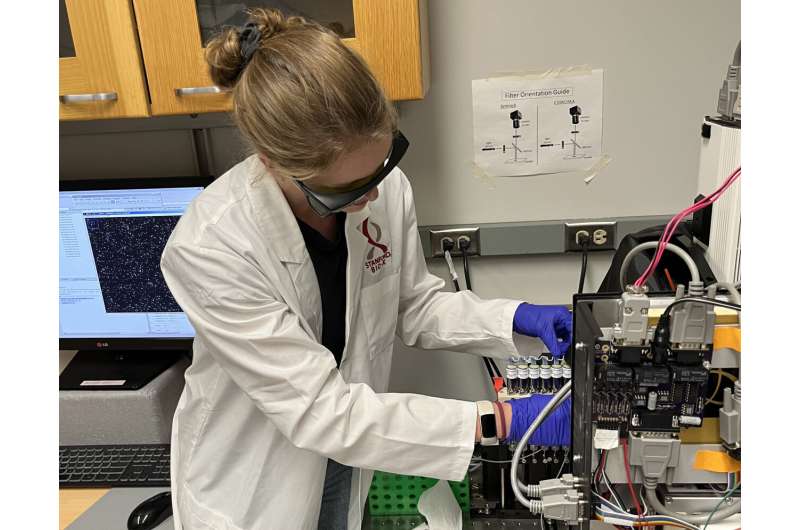A collaborative study by researchers from Stanford University and Stockholm University has shed light on the mechanisms through which proteins recognize DNA, a process crucial for regulating gene expression in human cells. Published in the journal Cell on November 26, 2025, the findings enhance our understanding of how genes are activated or silenced, which is essential for the proper functioning of various cell types in the body.
The research focuses on a key transcription factor known as KLF1, which plays a significant role in the development of red blood cells responsible for oxygen transport. By employing innovative experimental techniques, the team was able to measure the interactions of KLF1 with DNA, both in vitro (in test tubes) and in vivo (in human cells).
Emil Marklund, an assistant professor at the Department of Biochemistry and Biophysics at Stockholm University, emphasized the significance of their discovery: “The most important result is that we show it is possible to understand the binding between this transcription factor and DNA in human cells, and that this behavior is consistent with what we measure in test tubes.”
Understanding how transcription factors like KLF1 bind to DNA is vital, as this process directly influences the distinct functions of different cell types. Marklund stated, “For example, a nerve cell in the brain has different gene expression than a cell in the immune system.” Disruptions in this binding process can lead to various diseases, including cancer. Genetic research indicates that over half of all mutations associated with genetic disorders occur within DNA regions where transcription factors attach.
### Insights into Transcription Factor Dynamics
First author Julia Schaepe, a Ph.D. student in the Greenleaf Lab at Stanford University, highlighted the broader implications of their findings. “We discovered that this transcription factor pays attention to much more of the DNA sequence surrounding its binding sites than previously thought,” she noted.
By combining precise measurements from both test tubes and human cells with physical modeling, the researchers have constructed a more comprehensive understanding of DNA recognition. This advancement not only contributes to fundamental science but may also pave the way for new therapeutic strategies targeting gene regulation.
The study’s findings underscore the potential for future research to explore the intricate details of gene regulation and its implications for understanding various diseases. The work represents a significant step forward in comprehending how proteins interact with genetic material, which could eventually lead to breakthroughs in treatments for conditions resulting from gene expression errors.
In summary, the collaborative efforts of Stanford and Stockholm University researchers mark a pivotal moment in genetics, highlighting the crucial relationship between DNA and transcription factors. As they continue to unravel these complex interactions, the potential benefits for medical science and our understanding of human biology are immense.
